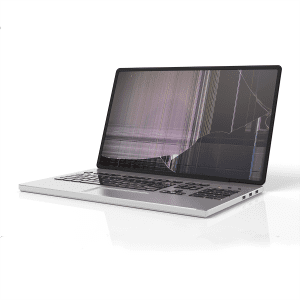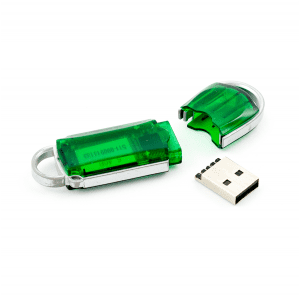How to Protect Your Data: Tips from Chicago’s Leading Data Recovery Experts
In this digital age, data safety is more important than ever. The thought of losing files, whether personal photos or work documents, can be an absolute horror. To help you avoid that, we’ve used our experience to offer a round-up of tips from Chicago’s top data recovery pros.
In this post, we’ll cover preventative measures, data backup best practices, and how to minimize data loss at home and in the office. Let’s get started!
Data Protection 101
First off, what is data protection? It’s all about keeping your data safe from unauthorized access, corruption, or loss. Think of it as a combination of practices and tools that work together to keep your info safe.
Today, we are faced with many threats, from sneaky malware and phishing scams to simple human error and hardware failure, all of which can be equally serious. Now that you know what those threats are, you can protect yourself.
Preventative Measures
Software Updates
Keeping your software current is the simplest and most effective way to protect your data. You know those annoying update prompts for your system or apps? They’re important! Those updates often include security patches that fix vulnerabilities that hackers can exploit. So next time you see an update notification, don’t hit “remind me later.” Update now to keep your devices safe.
Strong Passwords and Authentication
Passwords are your first line of defense against cyber threats. It’s easy to use something simple and easy to remember, but trust me, creating strong, unique passwords is worth the effort. Use a mix of letters, numbers, and special characters. Plus, you don’t want to use the same password across multiple accounts.
Better yet, enable multi-factor authentication (MFA) whenever possible. MFA adds an extra layer of security by requiring a second form of verification, like a text message code or a fingerprint scan. It might seem like a hassle, but it’s a powerful way to keep your accounts safe.
Internet Best Practices
Browsing the web can be a dangerous game if you’re not careful. Practice secure internet habits to protect your data. Be wary of unsolicited emails, and don’t click on links or download attachments from unknown sources. Phishing is everywhere, so always check the sender’s details and think twice before sharing personal info.
Invest in a reputable antivirus program to detect and block these threats. Also, consider using a virtual private network (VPN) to encrypt your internet connection, especially when you’re on public Wi-Fi. It’s like adding an extra layer of protection to your online activities.
Data Backup Best Practices
Types of Backups
Backing up your data is like having an insurance policy for your digital life. There are different types of backups you can choose from. Full backups copy all your data; incremental backups copy what’s changed since the last backup, and differential backups copy all changes since the last full backup. You can also choose between local and cloud backups (on an external hard drive). Cloud backups are great because they store your data off-site, protecting it from physical disasters like fires or floods.
Backup Frequency
How often should you back up your data? It depends on how often your data changes. For personal use, weekly backups might be enough. For businesses, daily or even hourly backups might be necessary. The key is to set up automated backups so you don’t have to remember to do it manually. Automation ensures your data is protected consistently without any extra effort on your part.
Data Recovery Plans
Even with the best precautions, things can still go wrong. That’s why you need a data recovery plan. This plan should outline the steps to recover your data if lost. Identify the most critical data, set recovery priorities, and keep contact info handy for IT support and data recovery services. Test your recovery plan regularly so it works when you need it most.
Minimizing Data Loss in Personal Settings
Protecting Personal Devices
Your personal devices are like treasure chests full of valuable data. Protect them. Install antivirus and anti-malware software to protect against threats. Also, take physical security seriously. Use strong passwords to lock your devices and keep them in a safe place to prevent theft or accidental damage.
Safe Storage of Sensitive Information
Storing sensitive information securely is another step. Encrypting your files adds an extra layer of protection so unauthorized users can’t access your data.
Many tools can help you encrypt files and folders. Also, consider using secure storage solutions like encrypted USB drives or cloud services with robust security features. So, even if someone gets their hands on your storage device, they won’t be able to access your info without the decryption key.
Minimizing Data Loss in Professional Settings
Employee Training and Awareness
Human error is the most significant cause of data breaches in a professional setting. Regular training sessions can educate employees on data security best practices. Teach them to recognize phishing, create strong passwords, and handle sensitive information securely. Create a data security culture within your organization so everyone understands the importance of data and knows how to do it.
Access Controls and Permissions
Implementing strict access controls and permissions can reduce data loss significantly. Ensure employees only have access to the data they need for their role. Review and update these permissions regularly to reflect changes in job responsibilities. Monitor and audit access to quickly detect and respond to unauthorized activities. This ensures that any potential breaches are caught early and dealt with effectively.
Conclusion
Protecting your data doesn’t have to be complicated. By taking proactive steps and following the advice from Chicago’s data recovery experts, you can minimize data loss in personal and professional settings.
Remember, the key to data protection is to stay informed, vigilant, and prepared. Whether updating your software, creating strong passwords, backing up your data, or training your employees, every little bit counts.
If you lose your data and don’t have a backup, Flashback Data can help recover it. That said, it is essential that you don’t attempt to recover the data yourself; instead, contact us immediately.








